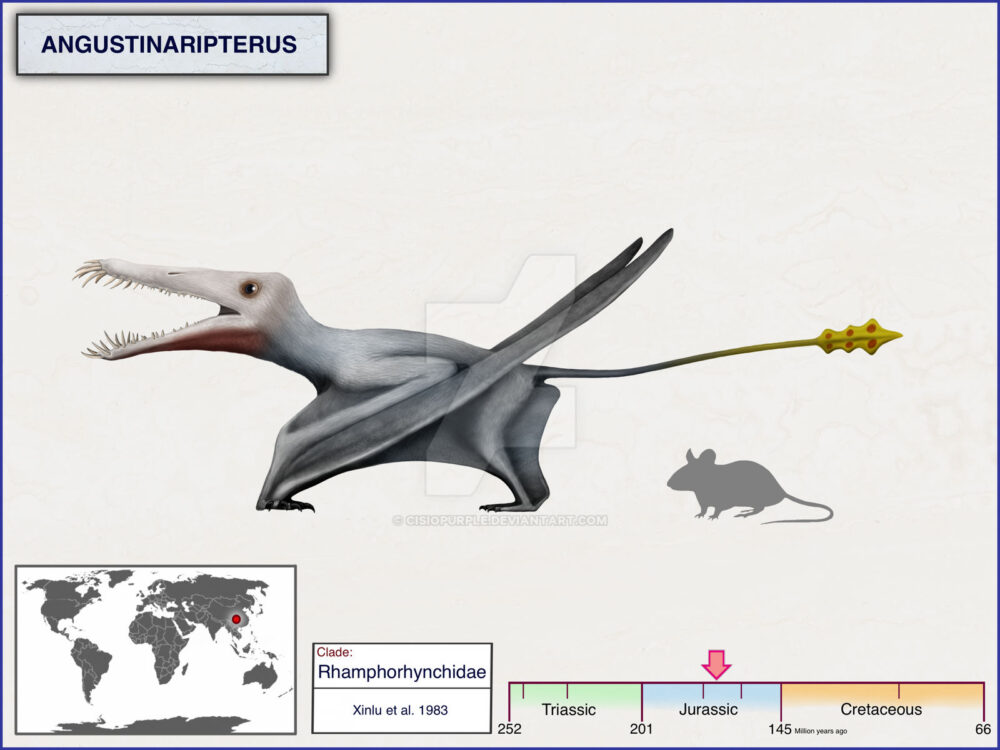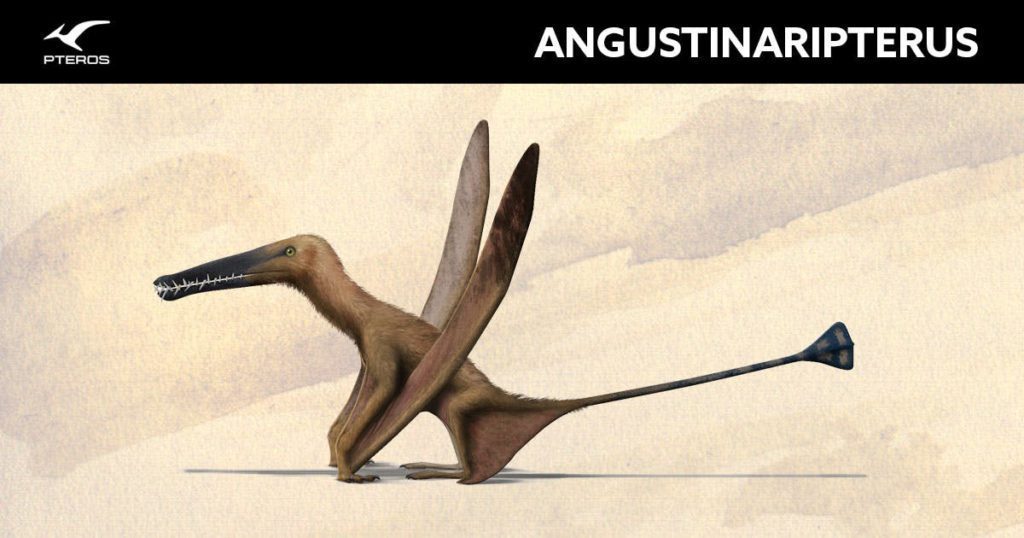Angustinaripterus - is genus of pterosaurswho lived in the Middle Jurassic period approximately 166 million years ago. He was flying reptilewhich had an elongated snout with sharp teeth and probably ate fish.
Its remains were found in China, and although only one specimen is known, it helps scientists better understand The evolution of early pterodactyls.

🏺 History of discovery and scientific classification
📜 Who opened it and when?
✅ 1983 - the first remains were found in China.
✅ 1984 - officially described by a paleontologist He Xinlu.
🏷 What does the name mean?
Angustinaripterus = "narrow-winged winged" (from Latin "angustus" - narrow, "nari" - nose, "pterus" - wing).
🔬 Classification
✅ Kingdom: Animalia
✅ Type: Chordata
✅ Class.: Reptilia
✅ Row: Pterosauria
✅ Family.: Rhamphorhynchidae (probably)
✅ Re.: Angustinaripterus
✅ View: Angustinaripterus longicephalus
🦴 Body structure and anatomy
Angustinaripterus had elongated muzzle with a lot of sharp teethindicating a fish-eating lifestyle.
📏 Main features
✅ Wingspan - approximately 2-3 meters
✅ Body length - about 1 meter
✅ Weight - several kilograms
🦇 Features of the structure
✅ Narrow head - The elongated snout made it easier to catch fish.
✅ Sharp, curved teeth - helped to hold the slippery prey.
✅ Long tail - could be used for balancing during the flight.
✅ Strong wings - allowed him to hover over the water in search of food.
Its anatomy resembles Rhamphorhynchuswhich indicates a close relationship with this group of pterosaurs.
🌍 Where did Angustinaripterus live?
✅ Place of finding - China (Sichuan Province).
✅ Period - Middle Jurassic (~166 million years ago).
✅ Environment. - the coast of warm seas rich in fish.
Probably, this pterosaur lived near rivers and lagoonswhere water resources were plentiful.
🍽 What did you eat?
Angustinaripterus was fish-eater (piscivore).
🐟 His diet included:
✅ Fish - is the main type of food.
✅ Mollusks and crustaceans - could eat small aquatic prey.
✅ Possibly insects - if they happened to be near water.
Its long teeth and narrow snout were ideal for catching fish from the water or directly from the air.
🦖 Enemies and defense
As a relatively small pterosaur, Angustinaripterus could have been preyed upon by predators.

🚨 Main threats:
✅ Predatory dinosaurs - Perhaps small theropods hunted it on the ground.
✅ Large marine predators - For example, ichthyosaurs or plesiosaurs.
✅ Other pterosaurs - could compete for food.
🛡 Methods of protection:
✅ Fast flight - could avoid attacks.
✅ Disguise - could hide in rocky places.
✅ Group behavior - may have lived in colonies, which reduced the risk of attack.
🏺 Why is Angustinaripterus important for science?
1️⃣ Helps to understand the evolution of early pterosaurs.
2️⃣ Shows transitional features between early forms and later pterodactyls.
3️⃣ It is one of the few pterosaurs found in the Middle Jurassic of China.
Conclusion: why is Angustinaripterus unique?
✅ A rare Jurassic pterosaurfound in China.
✅ He had a narrow head and sharp teethwhich made him an excellent fish hunter.
✅ He lived near the sea coastwhere he was looking for food among the waves.
Angustinaripterus is Another mystery in the evolution of flying reptilesthat reveals new details about the life of pterosaurs in ancient oceans! 🦇